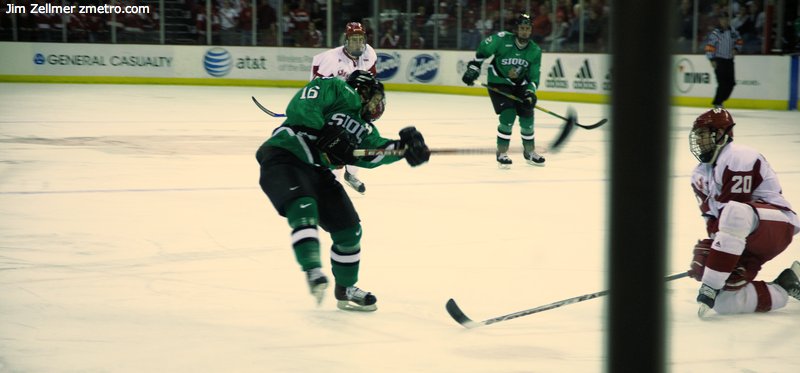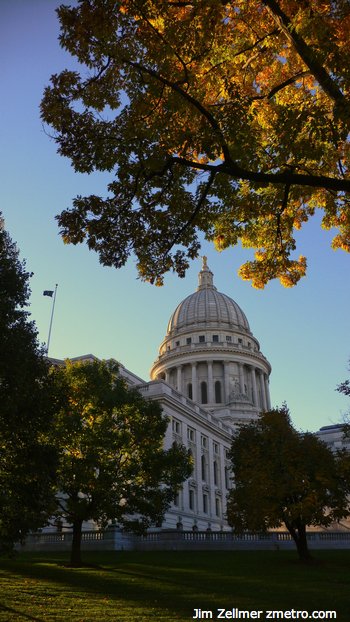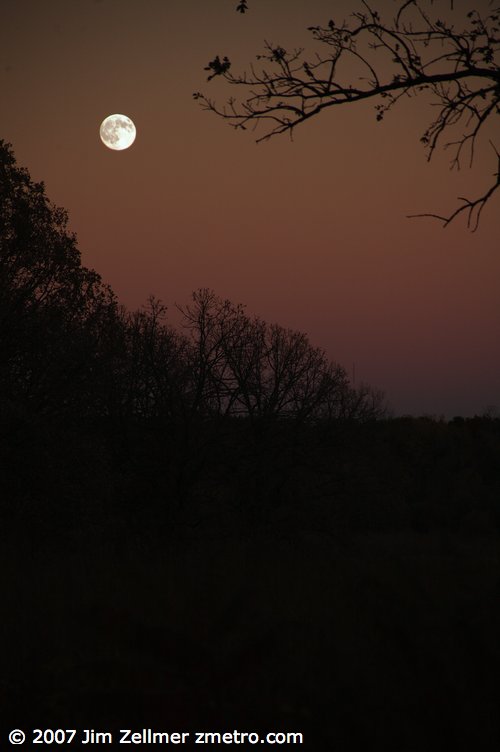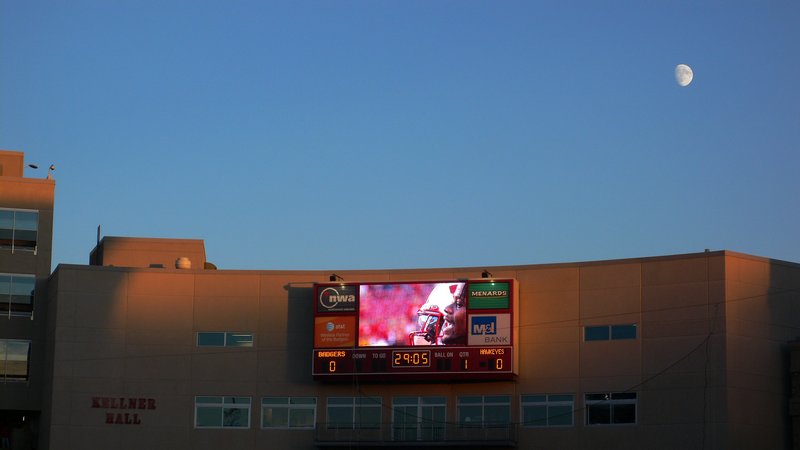

 Details of the Badgers 4-0 win available here. North Dakota had an amazing 43 shots on goal, including 25 in the third period. A tremendous, fast paced game. One of the best I’ve seen.
Details of the Badgers 4-0 win available here. North Dakota had an amazing 43 shots on goal, including 25 in the third period. A tremendous, fast paced game. One of the best I’ve seen.


 Details of the Badgers 4-0 win available here. North Dakota had an amazing 43 shots on goal, including 25 in the third period. A tremendous, fast paced game. One of the best I’ve seen.
Details of the Badgers 4-0 win available here. North Dakota had an amazing 43 shots on goal, including 25 in the third period. A tremendous, fast paced game. One of the best I’ve seen.

Wisconsin State Capitol and Fall Colors.

More photos and links here.

Great set of images.

University of Wisconsin Arboretum.
Maureen Taylor has dated a photograph to 1913 by studying the size and shape of a Lion touring car’s headlamps. Armed with her collection of 19th-century fashion magazines, she can pinpoint the brief period when Victorian women wore their bangs in tight curls rather than swept back. Using a technique borrowed from the CIA, she identified a photo of Jesse James by examining the shape of his right ear.
With millions of Americans obsessively tracing their roots, Ms. Taylor has emerged as the nation’s foremost historical photo detective. During a recent meeting of the Maine Genealogical Society, attendees lined up a dozen deep as she handled their images with a cotton glove and peered at the details through a photographer’s loupe. One man offered a portrait photo and asked if it could be of his great grandmother, who died in 1890. “It’s not,” Ms. Taylor said after about 15 seconds; she’d dated the hairstyle and billowy blouse to the early 20th century. When another attendee asked why her great-great-grandfather was wearing small hoops in his ears in a portrait, Ms. Taylor explained, “He was in the maritime trade.”
Since 1974, Nikon has sponsored a yearly photo competition for images that delve into the worlds beyond the reach of the unaided human eye. The camera maker feted the photographers who made the top 20 “photomicrographs” in Nikon’s annual Small World competition at New York’s Explorer’s Club. The winners were drawn from a pool of 1,709 submissions.
The dozen images collected here (the top 10 images, plus two Wired News picks) capture facets of living organisms that have a technical meaning to the trained specialist, but appear to be pure art to the layperson. The striking images convey something both strange and alien that could almost be sold as the first glimpses of extraterrestrial life. Yet, many of the objects presented here could not be more mundane or down-to-earth: A piece of ivory, a typical aquarium fish, a drop of sea water.


Fifty miles north of Frankfurt lies the small German town of Solms. Turn off the main thoroughfare and you find yourself driving down tranquil suburban streets, with detached houses set back from the road, and, on a warm morning in late August, not a soul in sight. Nobody does bourgeois solidity like the Germans: you can imagine coming here for coffee and cakes with your aunt, but that would be the limit of excitement. By the time you reach Oskar-Barnack-Strasse, the town has almost petered out; just before the railway line, however, there is a clutch of industrial buildings, with a red dot on the sign outside. As far as fanfare is concerned, that’s about it. But here is the place to go, if you want to find the most beautiful mechanical objects in the world.